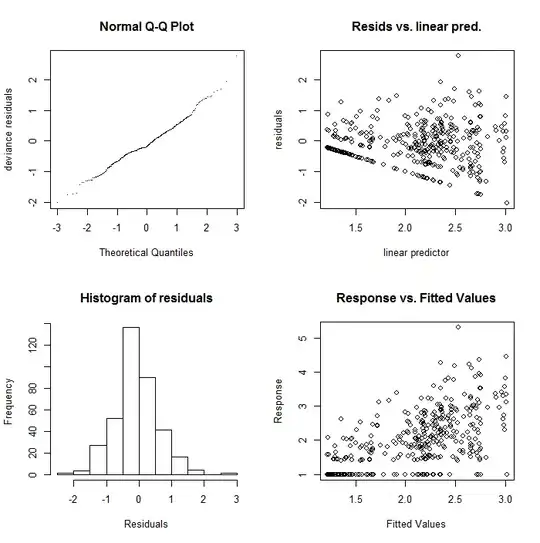Let $(X_n)_{n\in\mathbb N_0}$ denote a $\mathbb R^d$-valued Markov chain generated by the Metropolis-Hastings algorithm. Suppose I've run the algorithm on a computer and obtained a sample $x_0,\ldots,x_n$.
How can I compute the (truncated) autocorrelation of this sample?
I'm a bit unsure which quantity the autocorrelation actually is. What I really want to do is computing $\operatorname{eff}_{\overline\theta}$ from the paper Efficient Metropolis Jumping Rules (equation $(1)$ on page 600).
Let $$A_n:=\frac1n\sum_{i=0}^{n-1}X_i\;\;\;\text{for }n\in\mathbb N$$ and $$\tau_n:=\frac12+\frac1{\operatorname{Var}[X_0]}\sum_{k=1}^{n-1}\left(1-\frac kn\right)\operatorname{Cov}[X_0,X_k]\;\;\;\text{for }n\in\mathbb N.$$ I know that $$\operatorname{Var}[A_n]=\frac{\operatorname{Var}[X_0]}n2\tau_n\;\;\;\text{for all }n\in\mathbb N\tag1$$ and $$n\operatorname{Var}[A_n]\xrightarrow{n\to\infty}\operatorname{Var}[X_0]+2\sum_{k=1}^\infty\operatorname{Cov}[X_0,X_k]\tag2.$$
Maybe the quantity corresponding to equation $(1)$ from the paper is a truncated version from the right-hand side of $(2)$? In any case, how can we compute the right quantity for the sample $x_0,\ldots,x_n$ (in a numerically stable way)?
EDIT: I need to implement the computation in C++, but a pseudocode for the computation would be sufficient for me.
